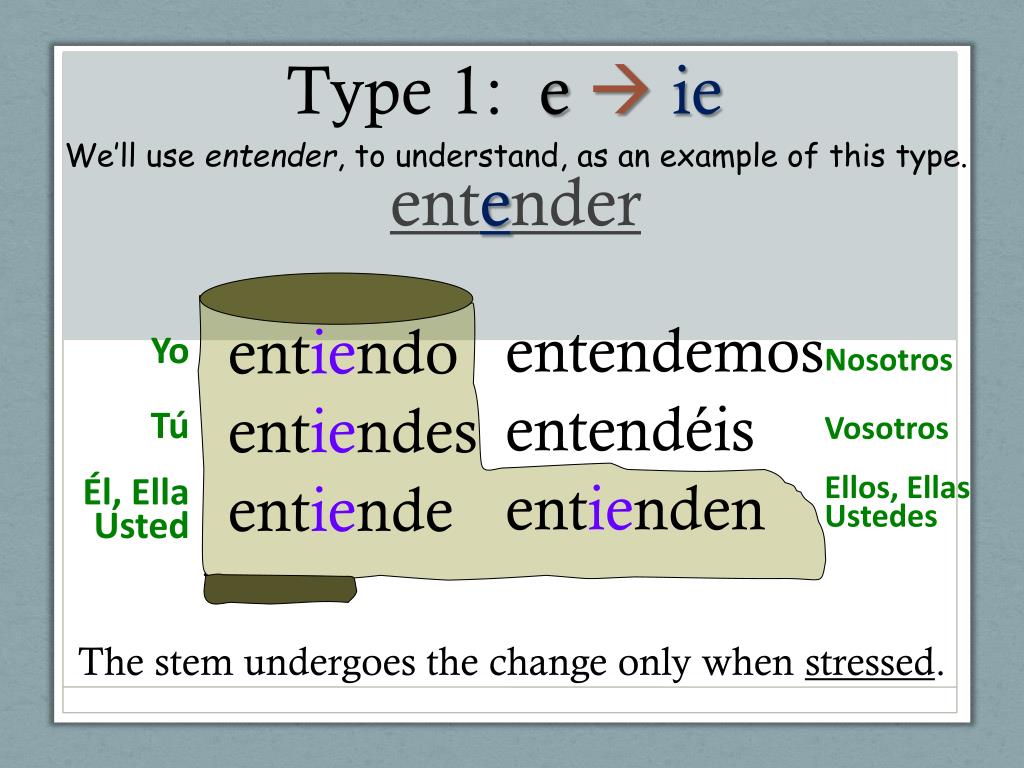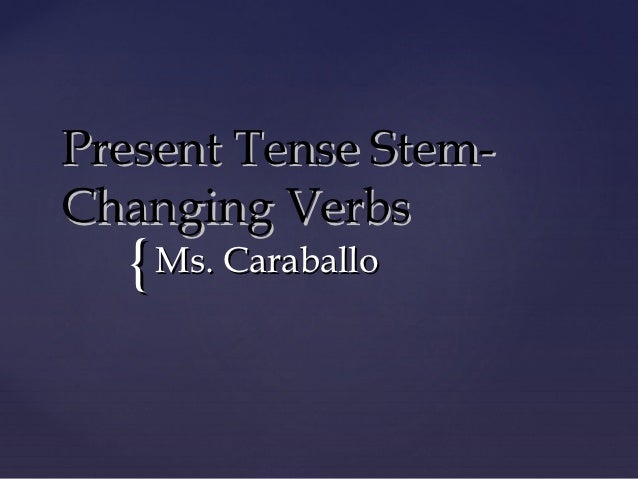
And most Spanish lessons don’t actually tell you that there are more verbs that conjugate that way. There are fewer e:i stem-changing verbs than e:ie and o:ue types, but the pattern that we saw before remains the same: the nosotros / vosotros forms do not have. Stem-Changing Verbs - 1 -zco If you’re familiar with the verb conocer, you’ll know that it’s present tense yo form is conozco. All e:i stem-changing verbs happen to be -ir ending verbs. So knowing what verbs have a stem change and what those changes are will learning those future changes a little easier. For the third type of stem-changing verbs, the e in the stem simply changes to i. There are other tenses and moods where many of these same stem changers have behave in a similar manner. This is the only verb in that category, so it is usually just lumped in with the "O" to "UE" stem changers. About Press Copyright Contact us Creators Advertise Developers Terms Privacy Policy & Safety How YouTube works Test new features Press Copyright Contact us Creators. On a final note, you will see that there is one verb, jugar, that is listed as a "U" to "UE" and you may wonder why we say there are only 3 kinds of changes. From that view you can see why some instructors like to refer to these verbs as "boot" verbs, because the forms inside the "boot" are the ones that have the change in their stem. You can also click on the "All Forms" button to see all six forms at once. Then click on a subject to finish the conjugation. Here is a list of common e:ie stem-changing verbs. In German some verbs have a stem-vowel change in the present tense, more specifically in the du and the er/sie/es-forms. After selecting a verb, you will see both the unchanged and the changed stem.

In the above interaction, you can see examples of the different kinds of stem changing verbs. All the verbs in the activities above have the same stem-changing irregularities in the present tense (notice that nosotros and vosotros are regulars), as you. So in preferir the second "E" will change to "IE" and in encontrar the "O" will change to "UE". Most text books identify stem changers by listing the change in parentheses after the verb, like poder (ue) and querer(ie).Ī common question for verbs like preferir and encontrar that have more than one vowel in the stem is: Which vowel changes? Once you find the stem, it is always the final vowel in that stem that will change. The only way to know which change it makes, or even if it makes a change at all, is to keep that in mind when you first learn the verb.

The first step involves identifying which of 3 kinds of changes it will make: there is "E" to "IE", "O" to "UE" and "E" to "I". The other forms, however, are a little more problematic.

For the subjects "nosotros" and "vosotros," the stem is exactly what you expect, merely drop the AR, ER or IR. The difference is in the stem (what is left after you drop the AR, ER or IR). That part of conjugating stem changing verbs is the same. 2) -Ir verbs that stem-change in the present tense (e.g.The first thing to remember is that nothing about the endings is any different than with the other regular present tense verbs. 1) -Ar verbs that stem-change in the present tense (e.g., mostrar, almorzar, pensar and -Er Present tense stem-changing verbs (e.g., Perder, Tener, entender) do not stem-change in any other tenses including the Preterite.


 0 kommentar(er)
0 kommentar(er)
